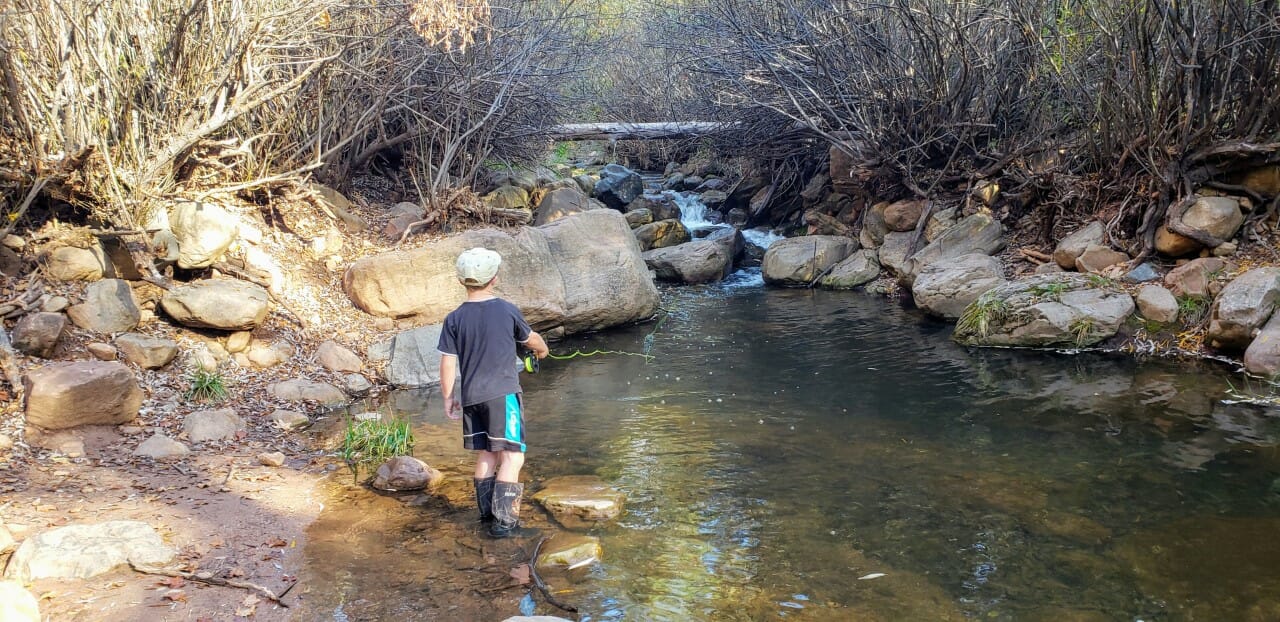By Jim Strogen
My older grandsons, 13 and 9, are skilled fly fishers. Much to my delight, they often catch more fish than me on a fly rod. Their success, right from the beginning, has always been my priority.
We started out, as most anglers do, for bluegills. At first, I would only take one boy at a time because their different ages and attention spans would not allow me to devote the proper amount of guidance to each child.
To be sure that they were successful when they came for a visit, I did what I call “scout fishing.” A few days before their arrival, I fished around the whole lake about the same time of day that I anticipated that we would be fishing. I knew where we should start, and other likely spots if a particular area slowed. At first, I’d rig up two spin-cast rods with mealworms under small bobbers. That way I could hand over my rod if I got a fish and keep the action at a good pace. If there was a tangle, or a need for a hook change if the bluegill swallowed the hook, the other rod was in a boy’s hand ready to catch a fish.
I began to bring my fly rod and hand it off when I hooked a fish, while they continued with their spin-cast rods. Once they saw how productive fly fishing was, they soon shifted to fly rods full-time and were primarily using roll casts to deliver the fly.
When my younger grandson first started, he would make a roll cast, then would walk his fly down the dock, or along a wall enticing a bite. A couple years later, he now is an expert roll caster and can handle any brushy trout
stream with ease.
Jim Strogen is the youth education coordinator and conservation chair for the Gila Trout Chapter of Trout Unlimited, Payson, Ariz.



